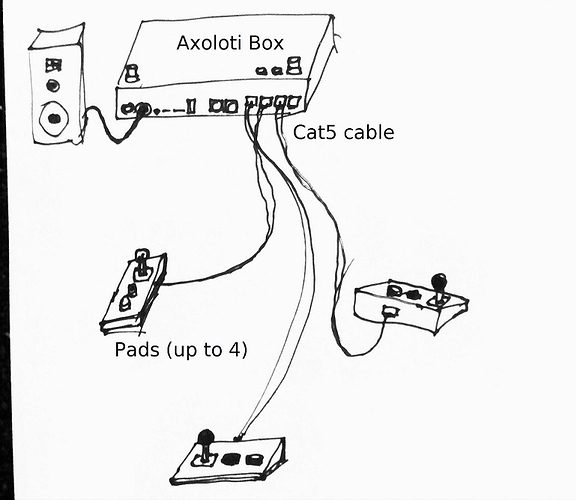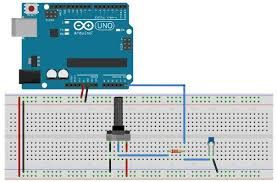Hi,I'm thinking about working on a project that would involve 4 hand held controllers all plugged into the axoloti.
Each "game pad" would have a joystick (2 analog signals) and 2 buttons (two digital signals).
I want to make a solid and replaceable system, that could be used in open air fairs, schools, art expos, or even in the street.
I wanted to know if I could use Cat5 cables between the "game pads" and the axoloti ?
And what would be a reasonable length ?
Can the signal be passed along such long thin cables without too much noise, or loss of information ?
Here is a small drawing of the setup idea
I intend to work on this project as an Open Source project and publish the maximum of information about it (and try to work with my local Fablab too), but more than the hardware, I'm really looking forward to making patches for the system, and testing it out with people.
I can imagine quite a few patch configuration using this system, from very experimental stuff, drone patches, and a load of possibilities with sequencers and tables...
I would really like to get a working version out by end of spring to try and test it out this summer, in public.
I think it could be a great gimmick for events, and a new way of doing performances (the main conductor is behind the axoloti, with at least a tempo and volume control (and patch selection buttons), and a midi controller can be added to give him even more control if needed.)
It could be a great project for schools too


